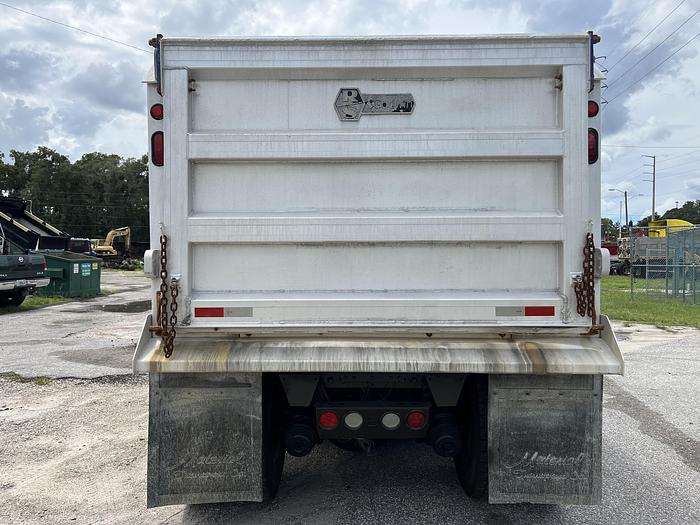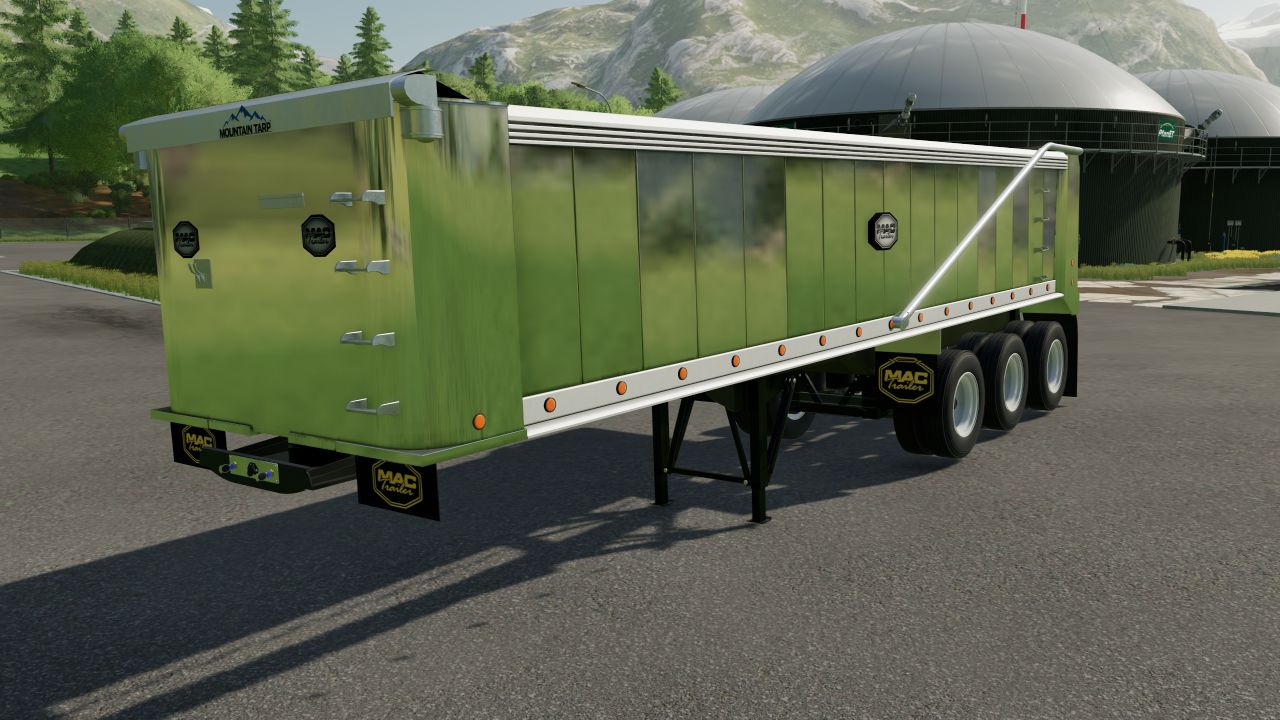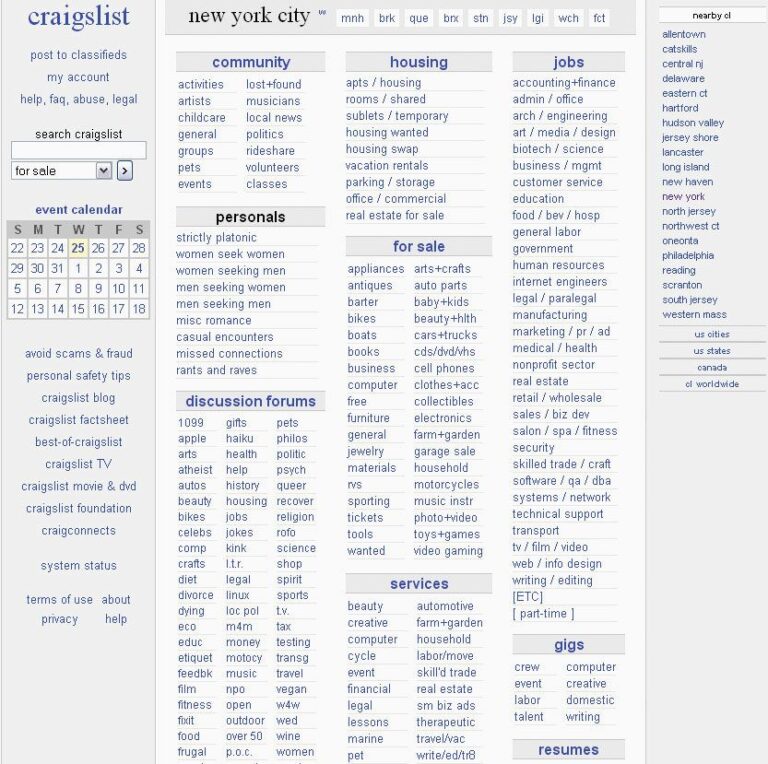Tri Axle Dump Truck Capacity: A Comprehensive Guide
Tri Axle Dump Truck Capacity: A Comprehensive Guide cars.truckstrend.com
Introduction: The Cornerstone of Commercial Hauling
In the demanding world of construction, mining, agriculture, and waste management, the tri-axle dump truck stands as an indispensable workhorse. Its robust design and ability to handle significant loads make it a staple for transporting bulk materials like sand, gravel, asphalt, dirt, and demolition debris. At the heart of its utility lies "capacity"—a critical metric that dictates not only the efficiency and profitability of an operation but also its safety and legal compliance.
Tri Axle Dump Truck Capacity: A Comprehensive Guide
Understanding tri-axle dump truck capacity goes beyond simply knowing how much material can fit in the bed. It encompasses a complex interplay of weight limits, volumetric measurements, material density, and regulatory constraints. Misjudging capacity can lead to costly fines, excessive wear and tear on equipment, increased fuel consumption, reduced productivity, and, most critically, dangerous safety hazards. This comprehensive guide will delve into the multifaceted aspects of tri-axle dump truck capacity, offering insights and practical advice to optimize your hauling operations.
Defining Tri-Axle Dump Truck Capacity: Payload vs. Volume
When discussing the capacity of a tri-axle dump truck, it’s crucial to differentiate between two primary measurements: payload capacity (weight) and volumetric capacity (volume). While intrinsically linked, they represent distinct limitations that collectively determine the maximum usable load.
Payload Capacity (Weight)
Payload capacity refers to the maximum weight of material a truck can legally and safely carry. This is the most critical factor, as exceeding weight limits can result in severe penalties and structural damage to the vehicle and infrastructure. Several factors contribute to determining a truck’s payload capacity:
- Gross Vehicle Weight Rating (GVWR): This is the maximum permissible total weight of the truck, including its own weight (tare weight), fuel, driver, and cargo. For tri-axle dump trucks, GVWR typically ranges from 60,000 to 75,000 pounds (approximately 27,200 to 34,000 kg), but can be higher with specific configurations and permits.
- Tare Weight (Curb Weight): This is the weight of the empty truck, including its chassis, engine, dump body, fuel, and all standard equipment, but without any cargo or driver. Tare weight varies significantly based on the truck’s make, model, materials (e.g., steel vs. aluminum body), and additional features. A typical tri-axle dump truck’s tare weight can range from 25,000 to 35,000 pounds (approximately 11,300 to 15,900 kg).
- Net Payload: The actual amount of cargo weight a truck can carry is calculated by subtracting the tare weight from the GVWR (Net Payload = GVWR – Tare Weight). Therefore, a tri-axle dump truck’s net payload capacity commonly falls between 35,000 to 45,000 pounds (approximately 15,900 to 20,400 kg), or 17.5 to 22.5 tons.
- Gross Axle Weight Ratings (GAWR): Individual axles or axle groups also have weight limits. Bridge laws and state regulations often dictate maximum weight per axle or axle group to protect road infrastructure. Tri-axle configurations (tandem rear axles plus a lift axle) distribute weight more effectively, allowing for higher overall GVWR compared to tandem axle trucks.

Volumetric Capacity (Volume)
Volumetric capacity refers to the physical space available within the dump truck’s bed to hold material. This is measured in cubic yards (yd³) or cubic meters (m³).

- Struck Capacity: This is the volume of the dump body when material is level with the top edges of the bed. It represents the "true" internal volume.
- Heaped Capacity: This refers to the volume when material is piled above the top edges of the bed at a specific angle of repose (the maximum angle at which a slope of loose material can stand without collapsing). Most dump truck beds are designed to allow for some heaped capacity.
For tri-axle dump trucks, volumetric capacity typically ranges from 15 to 22 cubic yards (approximately 11.5 to 16.8 cubic meters) for struck capacity, and slightly more for heaped capacity.

The Limiting Factor Principle
It’s critical to understand that the actual usable capacity of a dump truck is always dictated by the limiting factor. This means you can only carry as much material as the lowest of the following allows:
- The truck’s rated net payload capacity (weight).
- The legal weight limits for the roads and bridges you’re traveling on.
- The physical volumetric capacity of the dump body for the specific material being hauled.
For example, a truck might have a volumetric capacity of 20 cubic yards, but if you’re hauling dense material like wet sand, 20 cubic yards might exceed the truck’s legal weight limit long before the bed is full. Conversely, if you’re hauling lightweight material like mulch, you might fill the bed to its heaped capacity without approaching the weight limit.
Factors Influencing Tri-Axle Dump Truck Capacity
Several variables beyond the truck’s inherent design play a crucial role in determining its effective capacity:
- Material Density: This is perhaps the most significant external factor. Different materials have vastly different densities. For instance, a cubic yard of dry sand weighs approximately 2,700-3,000 lbs, while a cubic yard of topsoil might weigh 2,000-2,400 lbs, and concrete rubble can exceed 3,500 lbs per cubic yard. Knowing the density of the material being hauled is essential for converting volumetric capacity into payload weight.
- Legal Regulations: Federal, state, and local laws impose strict weight limits on commercial vehicles. These "bridge laws" are designed to protect infrastructure and vary by jurisdiction. They often include maximum gross vehicle weight, maximum weight per axle, and formulas for calculating permissible weight based on axle spacing. Permitting may be required for loads exceeding standard limits.
- Truck Configuration and Specifications:
- Body Material: Aluminum dump bodies are significantly lighter than steel, increasing potential payload. However, steel is more durable for abrasive materials.
- Chassis and Axle Configuration: The number of axles and their spacing directly impacts legal weight allowances. Tri-axles (with a steer, drive, and lift axle) are designed for higher weight distribution.
- Suspension System: Air ride suspensions can sometimes allow for slightly higher weight ratings and provide a smoother ride, reducing stress on the truck and cargo.
- Tire Rating: Tires have specific load ratings that must not be exceeded.
- Operational Conditions:
- Terrain and Road Conditions: Hauling on steep grades or rough terrain can impact effective capacity due to safety concerns and increased strain on the truck.
- Loading Technique: Even distribution of material within the dump body is crucial to prevent exceeding individual axle weight limits and to maintain stability.
- Driver Experience: A skilled driver understands how to manage loads, navigate weigh stations, and operate the truck safely within its limits.
Calculating and Optimizing Capacity
Accurately calculating and then optimizing your tri-axle dump truck’s capacity is key to efficient and profitable operations.
How to Calculate Net Payload (Weight)
- Find your truck’s GVWR: This is typically found on a sticker inside the driver’s door or in the owner’s manual.
- Determine your truck’s Tare Weight: The most accurate way is to weigh the empty truck (with a full fuel tank and driver) on a certified scale.
- Calculate Net Payload: GVWR – Tare Weight = Net Payload.
Converting Volume to Weight (and vice-versa)
- Identify Material Density: Obtain the density of the specific material you are hauling (e.g., from supplier data, engineering tables, or by weighing a known volume).
- Weight from Volume: Volume (cu yd) x Material Density (lbs/cu yd) = Total Material Weight (lbs).
- Volume from Weight: Desired Material Weight (lbs) / Material Density (lbs/cu yd) = Required Volume (cu yd).
Practical Tips for Optimization
- Know Your Numbers: Always have the precise GVWR, tare weight, and volumetric capacity of your specific truck.
- Understand Material Densities: Keep a chart of common material densities on hand.
- Invest in On-Board Scales: These systems provide real-time weight readings, allowing drivers to load accurately and avoid overloading or underloading. This is perhaps the most actionable insight for daily operations.
- Utilize Certified Scales: Periodically weigh your truck empty and loaded at certified public scales to verify accuracy and ensure compliance.
- Train Your Drivers: Educate drivers on proper loading techniques, weight distribution, and the importance of adhering to legal limits.
- Regular Maintenance: A well-maintained truck (proper tire pressure, healthy engine) operates more efficiently and reliably within its rated capacities.
- Consider Aluminum Bodies: If hauling non-abrasive materials and maximizing payload is paramount, an aluminum dump body can significantly increase net payload.
Benefits of Understanding and Maximizing Capacity
A thorough understanding and effective management of tri-axle dump truck capacity yield numerous benefits:
- Increased Efficiency and Productivity: Carrying the maximum legal and safe load per trip reduces the number of trips required for a given job, saving time and increasing overall output.
- Reduced Operational Costs: Fewer trips mean less fuel consumption, lower labor costs per ton hauled, and reduced wear and tear on tires, brakes, and the drivetrain.
- Enhanced Safety: Preventing overloading significantly reduces the risk of accidents, brake failure, tire blowouts, and loss of control. It also protects road infrastructure.
- Legal Compliance: Avoiding fines, penalties, and potential impoundment for exceeding weight limits.
- Improved Profitability: The cumulative effect of increased efficiency, lower costs, and avoided penalties directly translates to a healthier bottom line.
Challenges and Solutions Related to Capacity
Despite the benefits, managing dump truck capacity comes with its challenges:
-
Challenges:
- Variable Material Densities: The density of materials like dirt or sand can change significantly with moisture content, making precise loading difficult without on-board scales.
- Complex Regulations: State and federal bridge laws are intricate and vary, making compliance challenging, especially for interstate operations.
- Underloading: Fear of overloading can lead to underloading, which, while safe, is inefficient and reduces profitability.
- Driver Error/Pressure: Drivers may be pressured to carry more than legal limits or may misjudge loads.
- Loading Equipment Limitations: Not all loading equipment (e.g., excavators, loaders) provides accurate weight estimates.
-
Solutions:
- Technology Adoption: On-board weighing systems are a game-changer. Load sensors and displays provide real-time feedback to the loader operator and driver.
- Clear Communication: Establish clear policies and communicate weight limits to drivers and loading personnel.
- Regular Training: Ongoing training for drivers on load management, safety protocols, and regulatory updates.
- Strategic Planning: Plan routes to avoid known weigh stations if loads are near limits (though always stay legal). Understand specific project requirements and material characteristics beforehand.
- Partnerships: Work with material suppliers who can provide accurate density information or even pre-weighed loads.
Estimated Price Range and Capacity Considerations for Tri-Axle Dump Trucks
The price of a tri-axle dump truck can vary dramatically based on its age (new vs. used), make, model, engine size, transmission type, body material (steel vs. aluminum), additional features (e.g., lift axles, on-board scales, specialized bodies), and market conditions. Generally, a higher payload capacity often correlates with a more robust chassis, powerful engine, and potentially lighter-weight materials, all of which can influence the price.
Disclaimer: The prices listed below are very broad estimates for new tri-axle dump trucks and can fluctuate significantly based on customization, economic conditions, manufacturer, dealer, and regional markets. Used trucks will be considerably less expensive.
| Capacity Type/Range | Typical Use Cases | Estimated New Truck Price Range (USD) | Key Capacity-Related Features Impacting Cost |
|---|---|---|---|
| Standard Duty | Light aggregates, topsoil, sand, asphalt (smaller loads) | $150,000 – $220,000 | Steel body, standard engine, basic suspension |
| Payload: 17-20 Tons | |||
| Volume: 15-18 cu yd | |||
| Heavy Duty | Dense aggregates, demolition debris, large-scale earthmoving | $200,000 – $280,000 | Heavier frame, larger engine, reinforced body, advanced suspension |
| Payload: 20-22.5 Tons | |||
| Volume: 18-22 cu yd | |||
| Premium/Specialized | Maximized payload for specific materials (e.g., coal, lightweight aggregates) | $250,000 – $350,000+ | Aluminum body, optimized axle spacing, high-end components, on-board scales, custom features |
| Payload: 22.5-25 Tons | |||
| Volume: 20-25+ cu yd |
Note: On-board scales are a valuable addition that can cost anywhere from $2,000 to $10,000+ depending on complexity, but they quickly pay for themselves in efficiency and avoided fines.
Frequently Asked Questions (FAQ)
Q1: What is the average payload capacity of a tri-axle dump truck?
A1: The average net payload capacity for a tri-axle dump truck typically ranges from 17.5 to 22.5 tons (35,000 to 45,000 pounds), depending on the truck’s tare weight and legal GVWR.
Q2: How many cubic yards can a tri-axle dump truck hold?
A2: A tri-axle dump truck usually has a volumetric capacity of 15 to 22 cubic yards (struck capacity), with slightly more for heaped capacity.
Q3: How do I know if my dump truck is overloaded?
A3: The most accurate way is to use on-board scales or weigh your loaded truck at a certified public scale. If you don’t have these, you must rely on calculations based on material density and your truck’s known empty weight and GVWR. Signs of severe overloading include squatting suspension, bulging tires, and difficulty braking.
Q4: What’s the difference between "struck" and "heaped" capacity?
A4: Struck capacity is the volume when the material is level with the top edges of the dump body. Heaped capacity includes the volume of material piled above the bed, at its natural angle of repose.
Q5: Does the type of material affect the actual capacity?
A5: Absolutely. Material density is crucial. A truck might be volumetrically full with lightweight material but still under its weight limit. Conversely, a truck could be well under its volumetric capacity but already at its weight limit when hauling dense materials like wet sand or concrete.
Q6: Are there legal limits on dump truck capacity?
A6: Yes, strict legal limits are imposed by federal, state, and local governments. These include Gross Vehicle Weight Ratings (GVWR), Gross Axle Weight Ratings (GAWR), and bridge formulas that dictate maximum permissible weights based on axle configuration and spacing. Violating these limits can result in significant fines and safety risks.
Q7: Can I increase my dump truck’s capacity?
A7: You cannot legally increase a truck’s rated payload capacity (GVWR), as this is determined by the manufacturer and legal regulations. You can sometimes increase volumetric capacity by adding sideboards, but you must always stay within the legal weight limits, which usually become the limiting factor for dense materials. Reducing the truck’s tare weight (e.g., using an aluminum body) is the most effective way to increase net payload.
Conclusion: Maximizing Potential, Ensuring Safety
Tri-axle dump truck capacity is far more than a simple number; it’s a dynamic variable influenced by truck specifications, material properties, and a complex web of regulations. A comprehensive understanding of both payload (weight) and volumetric capacity, coupled with an awareness of the "limiting factor" principle, is paramount for anyone involved in bulk material transport.
By investing in knowledge, technology like on-board scales, and rigorous training, businesses can optimize their hauling operations, minimize costs, enhance safety, and ensure legal compliance. Ultimately, mastering tri-axle dump truck capacity transforms these powerful machines from mere transporters into highly efficient, profitable, and safe assets at the heart of any demanding project.






